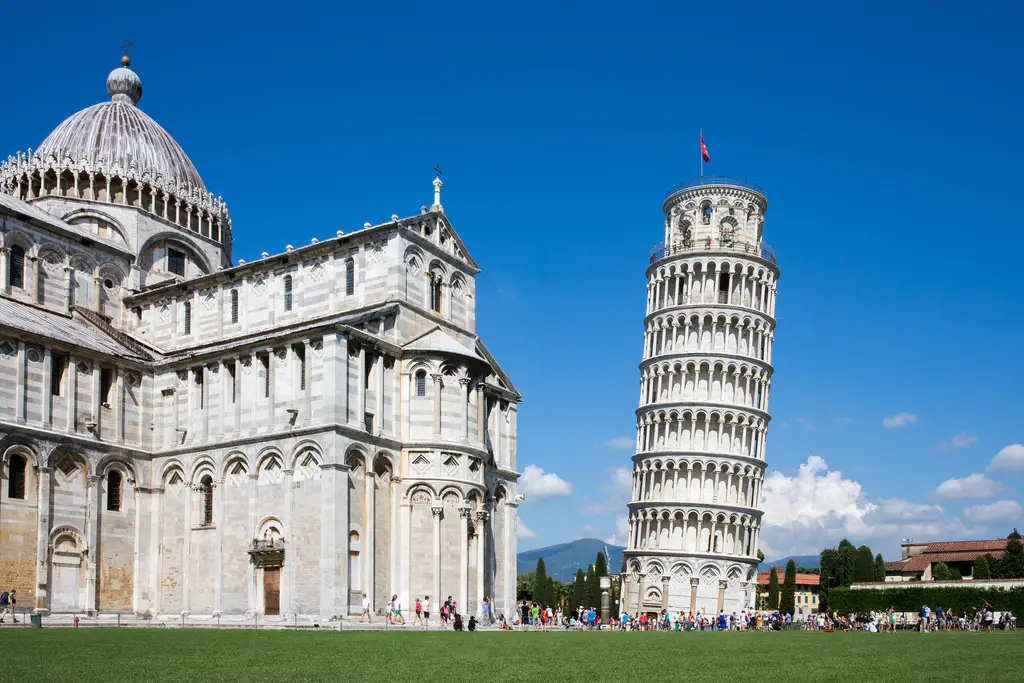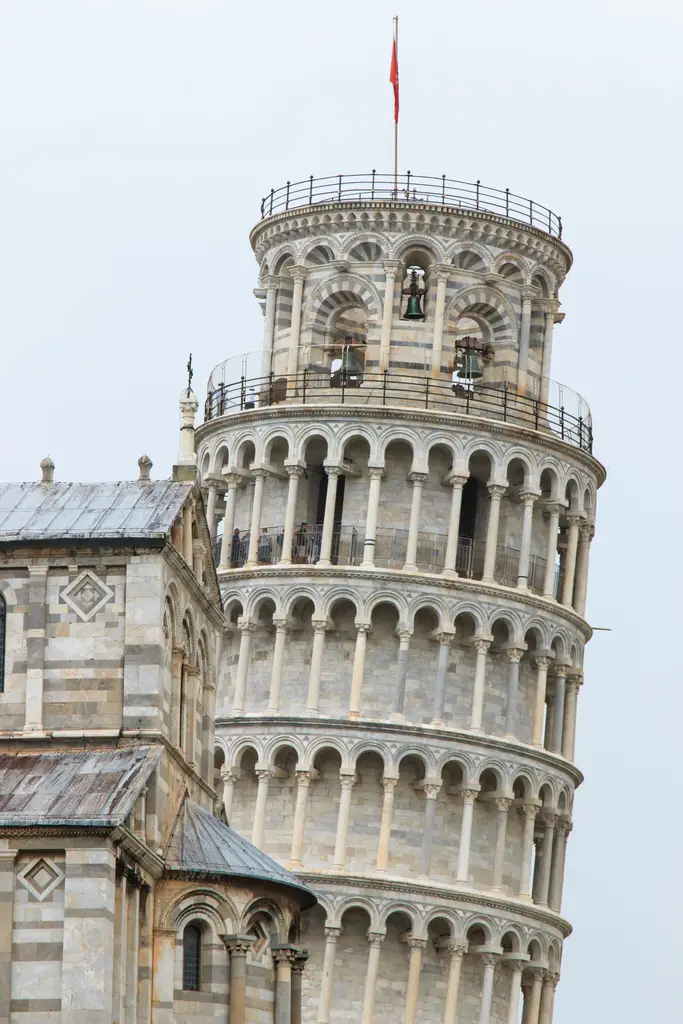The Leaning Tower of Pisa is an architectural oddity and probably the most famous leaning building in the world. Construction of the tower started in 1173 and wasn’t officially finished until 1370, but it was doomed to lean as soon as the first stones were laid. Here are some things you might not know about this impressive structure.
1. The tower began to lean after the third floor had been constructed after 1173. The builders had set the foundation on soft earth made of clay and sand. Work on the tower was stopped shortly after that time due to a conflict with Genoa and didn’t start up again until 1272. Four more stories were then constructed until there was yet another work stoppage. It would be almost another hundred years before the Tower of Pisa was completed with the construction of the final eighth story in 1370.
2. Initially, the tower leaned to the north, and the builders tried to correct the lean by lengthening the columns on that side. By the time work began again in 1272, the tower was leaning the other way to the south completely and away from the correction. Builders tried to correct the lean again on the fifth and sixth floors by lengthening the columns and arches on the south side of the tower. The corrections give the tower a slightly curved, banana-like appearance.
3. It’s not really a surprise that the tower leans. Pisa’s name came from a Greek word that meant “marshy land” when it was named in 600 BC.
4. The Tower of Pisa isn’t the only thing in Pisa that leans. The bell towers of St. Michele dei Scalzi church and St. Nicola church, along with the cathedral and baptistery, are sinking and leaning as well, although to a much less extent.
5. The reason why the tower was leaning was a mystery for 800 years. It wasn’t until restoration efforts were underway in 2001 when it was discovered that the tower had been built on shallow, soft soil. But this still didn’t explain why the tower leaned and didn’t just settle evenly over time.
An English geotechnical engineer named John Buland solved the final mystery and discovered that the lean was caused by fluctuations in the water table on the tower’s north side. The water was higher on the north at times and caused the lean to the south.
6. The first real attempt at stabilizing the tower’s lean was made in 1935 when engineers put cement grout into the foundation of the structure. This, however, only made the problem worse and caused the tower to lean even more.
7. By 1990, the Tower of Pisa reached its greatest level of incline at 5.5 degrees. Computer models predicted that the tower would fall if it reached 5.44 degrees, but the tower continued to stand, albeit precariously. The tower’s seventh floor was hanging fifteen feet from vertical over the ground.
8. After 1990, a serious, technical restoration process began, and the tower was closed to tourism. Engineers placed lead weights on the tower’s north side and took out soil from beneath the tower. Steel cables were attached to the tower as a precaution in case something from the restoration went awry.
The program continued for ten years until 2000 when the lean was decreased by six inches, back to an incline that the tower had in 1870. A year later, in 2001, the lean had been corrected to the lean it had in 1838. It’s not known how long the fix will last, but it’s predicted it will keep the tower leaning safely for another 200 years.
9. There are 294 steps to the top of the Tower of Pisa, and it has seven bells.
10. In World War II, it was believed that the Germans were using the tower as an observation post. When the Americans advanced toward Pisa near the end of the war, orders were given to a 23-year-old American Sergeant to direct fire on any structure that was suspected of having German infantry inside. He didn’t call for the cathedral and tower to be destroyed because he thought they were too beautiful. The generals ultimately spared the tower from destruction.
Sources: Guardian, Smithsonian, Madrid Engineering, History, BBC, Tower of Pisa, How Stuff Works, Guardian



